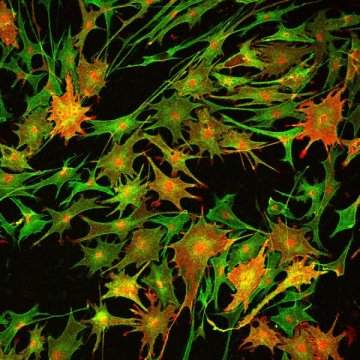
Researchers at the Cincinnati Children’s Hospital Medical Center are developing an experimental molecular therapy designed to restore insulation on peripheral nerves damaged by autoimmune diseases. Such diseases cause the body to attack its own healthy tissues, and patients experience persistent neuropathic pain as insulation on healing nerves is unable to fully regenerate.
The international team of researchers was led by Dr Richard Lu, director of the Cincinnati Children’s Brain Tumor Center. In the initial study, the team performed small-molecular epigenetic screening for compounds that inhibit enzymes involved in epigenetic changes on chromosomes. These changes alter the regulation of gene activity in cells. Small-molecular inhibitors already used to treat some forms of cancer were identified and tested on mice with damaged sciatic nerves. Findings were published in Nature Medicine on 12 February.
The molecular compounds targeted the enzyme histone deacetylase 3 (HDAC3), which has been shown to prevent damaged peripheral nerves from properly regenerating insulation. As such, inhibiting HDAC3 caused the expansion of Schwann cells, which in turn form a protective layer around the nerves, known as a myelin sheath. Following treatment, the mice demonstrated improved limb function and a decrease in observable discomfort.
“Remarkably, temporary inhibition of HDAC3 robustly accelerated the formation of myelin that helps insulate peripheral nerves,” Lu said. “This promoted functional recovery in the animals after peripheral nerve injury.”
In a healthy body, HDAC3 acts as a molecular brake on the production of the myelin sheath. However, following peripheral nerve damage the enzyme excessively restricts myelin regeneration and results in a layer of nerve insulation too thin to allow signals between the spinal cord, extremities and organs to pass normally.
Treatments in the initial trial were carefully timed, ensuring HDAC3 was inhibited in mice only during a critical phase of nerve regeneration. Blocking HDAC3 for too long could cause myelin to overdevelop and make insulation so thick that it could cause functional problems in extremities. As such, allowing the right amount of myelin to regenerate is crucial in ensuring normal levels are reached.
How well do you really know your competitors?
Access the most comprehensive Company Profiles on the market, powered by GlobalData. Save hours of research. Gain competitive edge.

Thank you!
Your download email will arrive shortly
Not ready to buy yet? Download a free sample
We are confident about the unique quality of our Company Profiles. However, we want you to make the most beneficial decision for your business, so we offer a free sample that you can download by submitting the below form
By GlobalDataExtensive research is still needed before the study can move on to clinical application in human patients. Animal models that will more closely resemble the repair of human peripheral nerves are being explored, as well as demyelinating diseases such as multiple sclerosis. If results are positive, researchers could pursue a Phase I clinical trial in patients with myelin deficiency in their peripheral and central nervous system.







